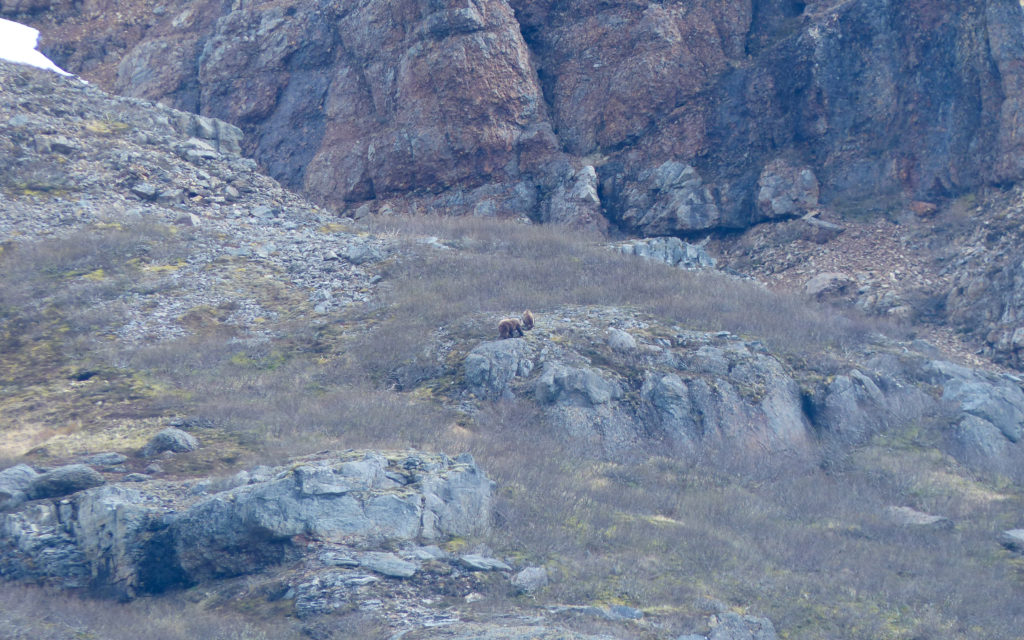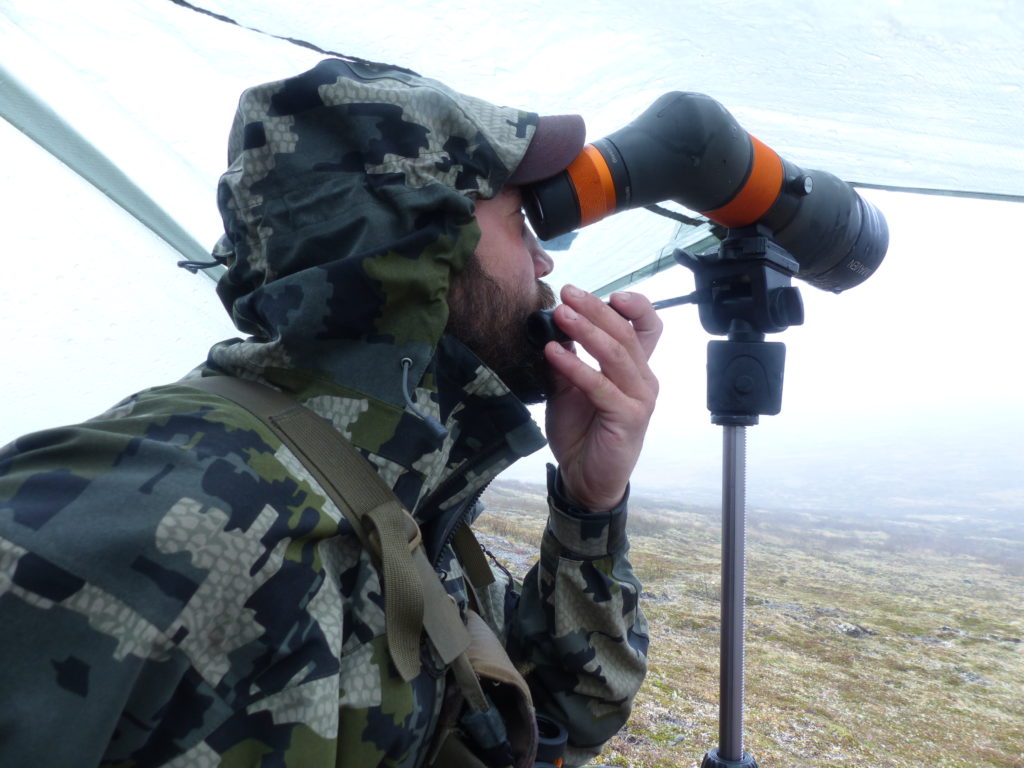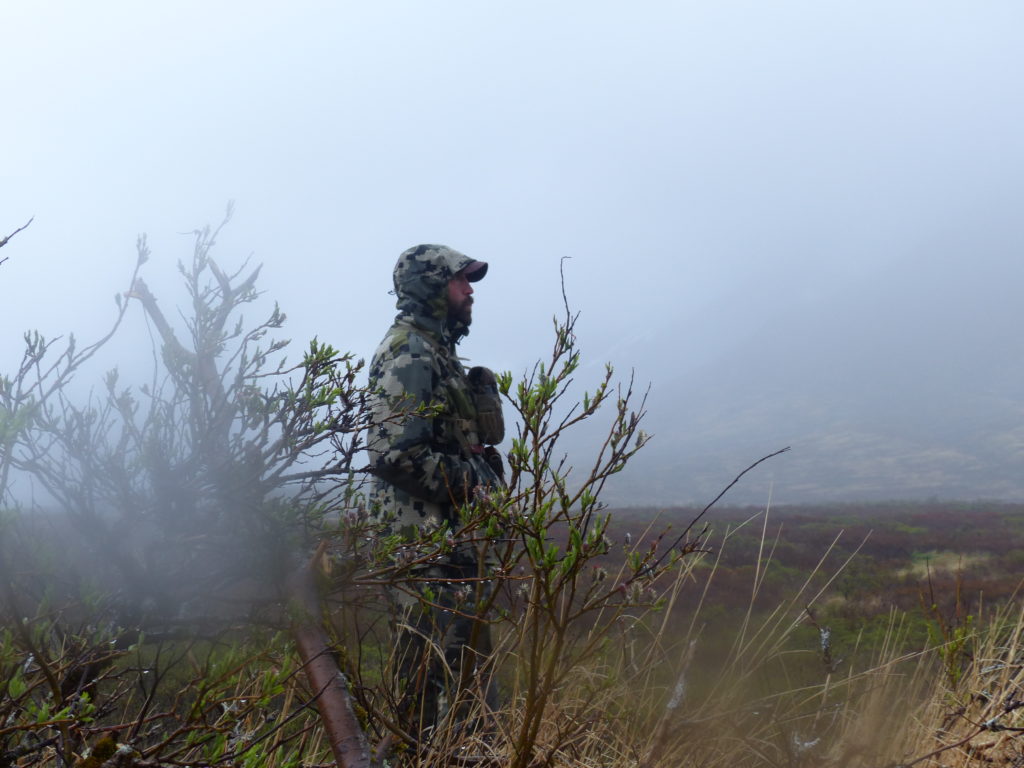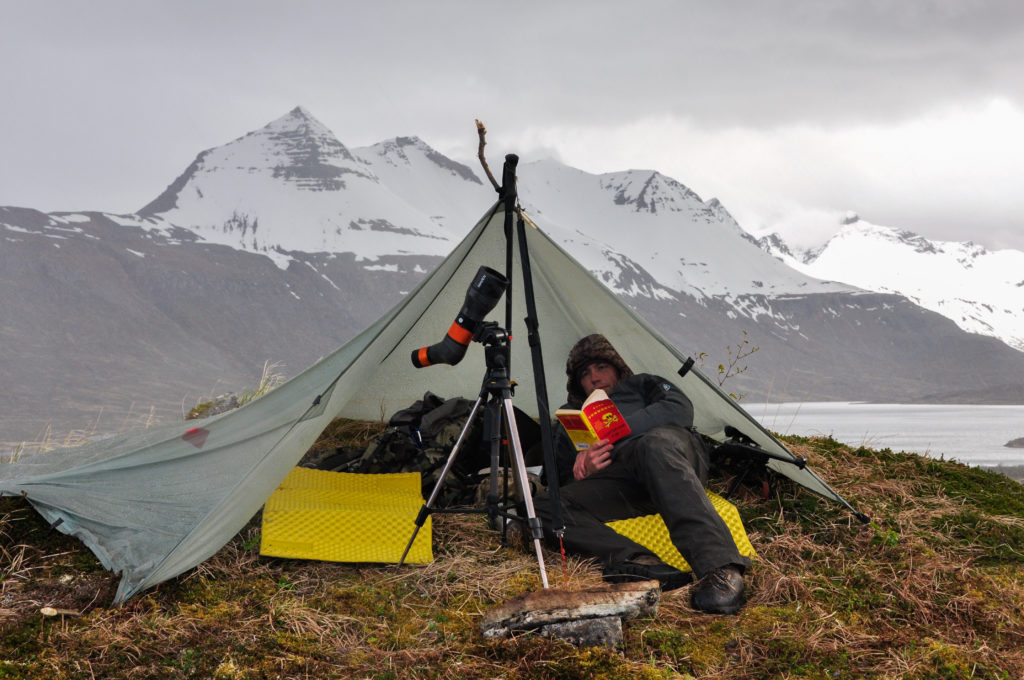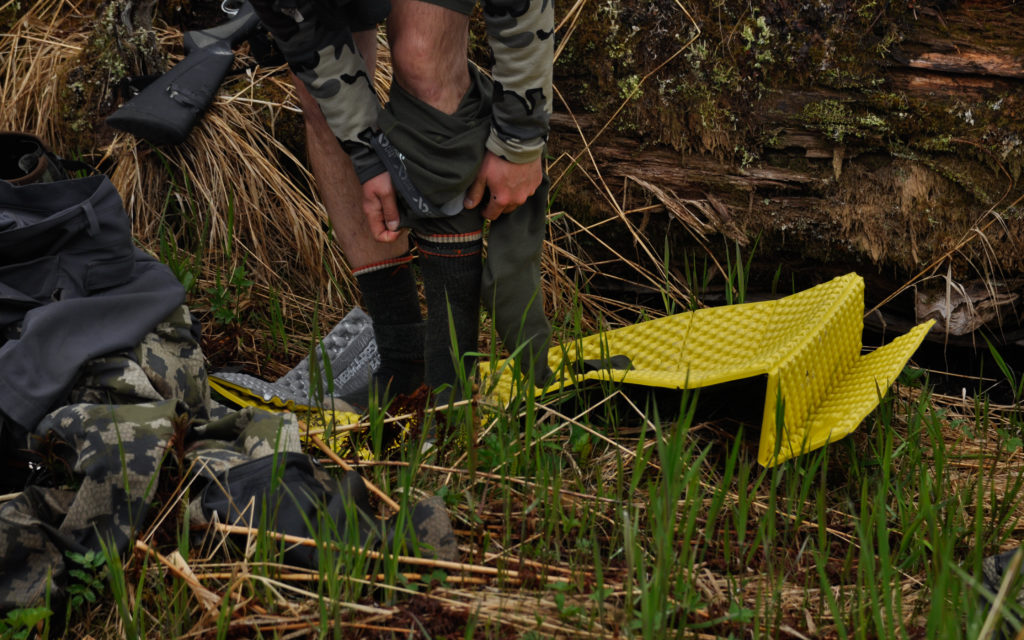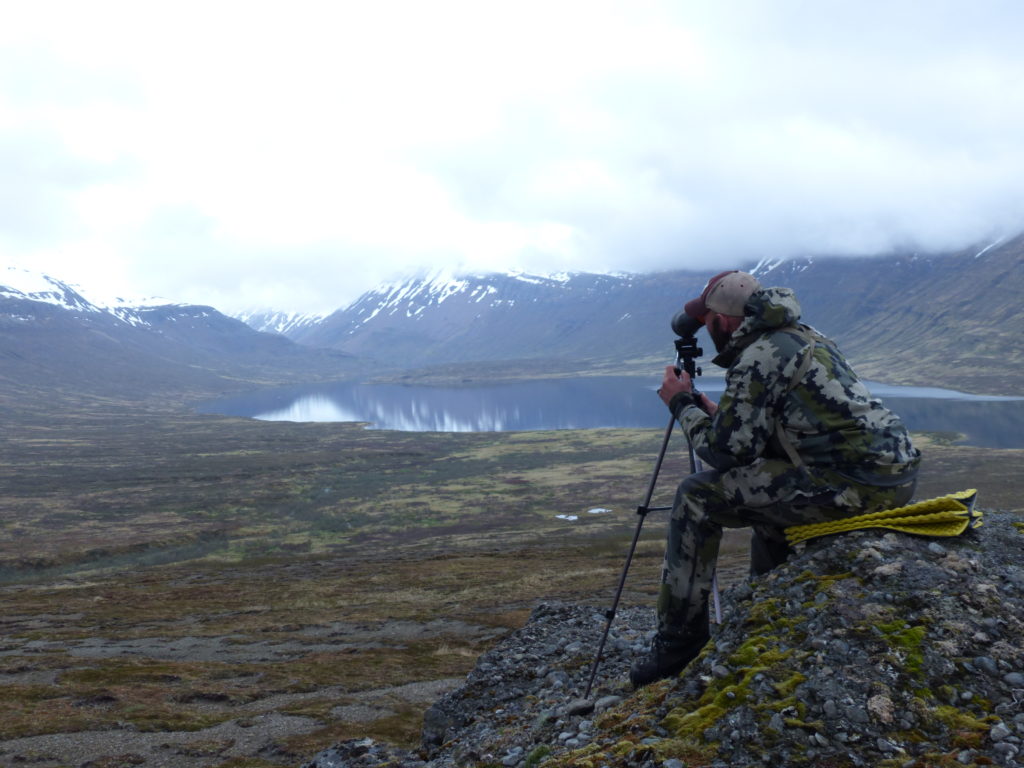Spring in Alaska is as any season throughout Alaska…wet. The extended forecast always calls for precipitation. Two of my bear hunts this spring were in areas known for their “big ole’ fat rain” forecasts and the other is renowned for its “sideways rain” tendencies. All these Alaskan odysseys have helped me become a subject matter expert on rain gear. I think of it more as “moisture management apparel” because it protects us from FAR more than just rain. It shields us from the wet moss that we sit upon while glassing; it combats the splashing waves from the water we’re floating; it leads the charge through the dripping wet willow brush; and curses along with us during epic alder shwacks.
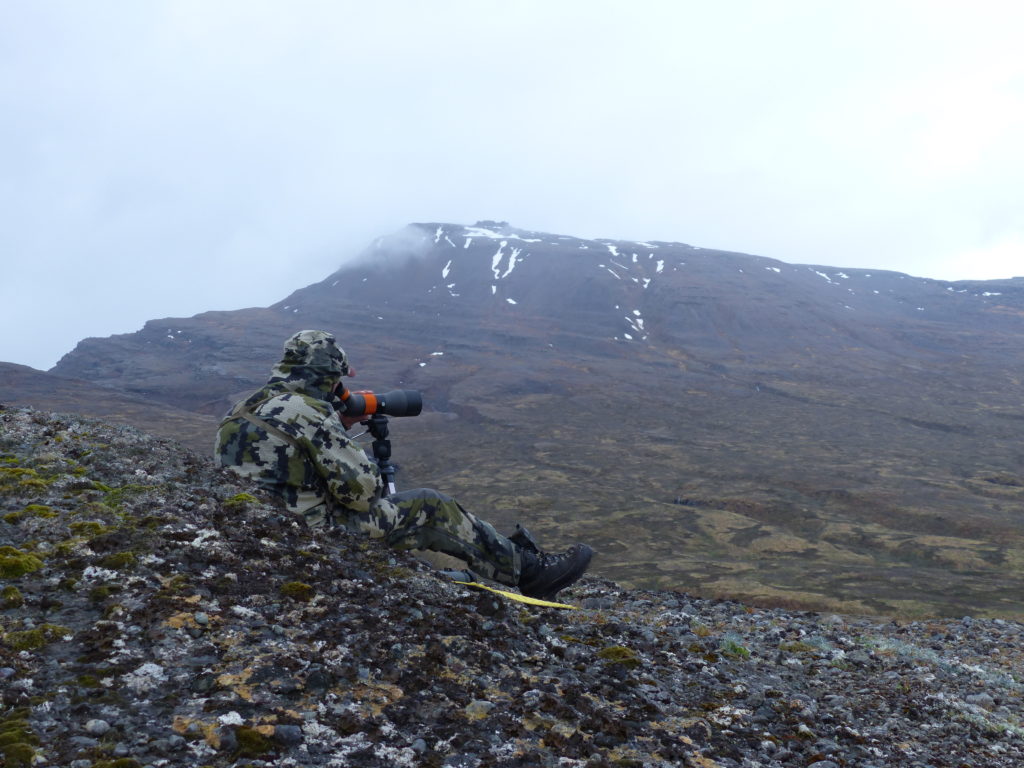
This article starts off a multi-part series where we’ll delve deep into the topic of rain gear with an emphasis on “breathable” fabrics. It is a fitting starter to help you all maximize the gear you currently have. As you learn more, you’ll be more prepared to select what you need for your specific upcoming adventures. While there are several fantastic options to choose from in today’s market, we’ll point out that there is no single best option. Every season and region has its own microclimate that may necessitate a new scheme.
To give your rain gear a fighting chance, first maximize the efficacy of your fabric. Remember that a breathable membrane is just a fabric system with a bunch of really tiny holes throughout it. Like any hole, water and air can flow either direction through it and the bigger the hole the faster they can move through. With breathable rain gear, you have to generate a heat gradient that drives the moisture outward. If the membranes are matted with dirt, grease, blood, mud, etc; they cannot efficiently facilitate this. Hence, keeping them clean is critical and generally entails washing your items in warm water with a light detergent. NikWax is most commonly recommended for fabrics with a DWR coating. This DWR finish will degrade over time but can generally be reapplied with wash-in or spray-on treatments. Please research and follow your manufacturer’s recommendations for cleaning and re-treating…and then do it!
In the field, be meticulous about mitigating the amount of work the membrane has to do.
Don’t expect those tiny pores to keep up with demand when the weather turns to “big ole fat rain”. Learn how to help the membrane work and employ some simple tricks to keep as much water off it as possible.
High-end garments will have numerous “big holes” to assist those tiny pores. These include the grandiose front zippers that can seal all the way up to your nose or open all the way down to your waist as well as zipper openings in the armpits and down the leg. A day of hunting in wet conditions is truly a game of “musical zippers” for me but it’s crucial to maintaining normothermia. You must be warm enough to create the heat gradient that moves moisture away from your core but not warm enough that you perspire beneath your shell and generate more moisture to manage. Tight zippers and rubber cuffs are great for sealing out wind and water when it’s coming in fast but sometimes it’s important to open those vents. You’ll generate air currents that can flow up your extremities and drive moisture out the larger openings. When you’re out of the elements or no longer need to be sealed up tight, let the big holes do the heavy lifting. This may also involve an extra walkabout just to warm your body and facilitate drying your gear before you take it off for the day.
Tools of the Trade
A wise Alaskan (and author of “Hunting Hard in Alaska”) named Mark Taylor gave me this influential bit of advice during my first year in Alaska. “Everything in your pack should have multiple purposes. If you’re going to carry it up a mountain, make sure you can use it for at least two things.” The following items fit that advice and top my list of items that are ALWAYS on my person while hunting. Here’s how I use them to battle the wet elements.
Trekking Poles
There must be a book somewhere entitled “1001 uses for trekking poles”. They are a truly remarkable tool for calorie conservation. A dance through a dripping wet alder thicket is a sure-fire way to completely overrun your gear and end up wet and then cold. But if you can knock most of those droplets away before you pass through, your gear has a fighting chance of keeping your base/middle layers dry. I use my trekking poles to give any and all brush ahead of me a healthy water-clearing ‘smack’ and then I watch as gallons of water droplets fall to the ground before they have a chance to saturate my rain gear. When the rain falls too hard for breathable rain gear to compete with, its time to stop and make a shelter. An improvised shelter can be erected in a few minutes and trekking poles serve well as the tent poles. You’ll block out the wind and rain to get and/or stay dry which ultimately leads to profound calorie conservation.
Tarp Shelter
When you can no longer generate enough body heat to overcome the wetness and your outer layer starts to saturate, STOP and get out of that situation. There’s rarely an advantage to hunting in these weather conditions anyhow. Rest under a tarp or rain fly, open up a few “big holes” to generate some air movement beneath your shell and glass from there or break out a book. If you must hike in the rain, take off your insulating layers and keep them dry in your pack.
I don’t remember who makes the tarp that you see in all these photos. I google-searched “tarp shelters” one night in a battle of insomnia and hit it rich. It weighs one pound and stuffs down to the size of a canteen.That impulsive buy has been everything from my primary shelter on sheep and mountain goat hunts to a siwash shelter on the side of a mountain during a late night pack-out. It’s protected multiple meat caches and it’s been a quick glassing shelter through countless hunts. For all it’s done for me, I honestly cannot list one reason why I would ever leave it behind. A savvy woodsman can always fashion stakes out of willow sticks, heavy rocks, or makeshift deadman anchors so leave the weight of stakes behind in favor of several strands of paracord. *Paracord is also on that list of 10 items to never leave behind.
Closed Cell Foam Sleeping Pad
Once you convince yourself to pack one everywhere, you’ll never find yourself with soggy bottoms or wet knees ever again. Use it when you lay prone to shoot. Rest on it beneath your glassing shelter. Kneel on it when filling your water bottle. And when you are sitting down to glass, slide it under your butt first. Don’t allow the wet and cold rocks or tundra to contact you because the conductive heat loss this generates is immeasurable (especially considering that your thighs and glutes are the largest muscle groups in your body) and the moisture will quickly saturate your clothes . You’ll be burning through precious calories just to stay warm and even more to get dry. This is the greatest takeaway from my bear hunts this spring and you’ll see Thermarest z-lite pads being utilized in a majority of my photos. And as a sleeping pad…you’ll never ever ever have to worry about them popping!
Puffy Down Layers
For ages, down was ill-advised in wet weather environments but the new waterproof down products are changing that. Merino wool has its place here too. I wouldn’t argue against somebody promoting wool but I now prefer the super down options because their shell fabrics also add another wind and water-resistant barrier against the elements. Also, I overheat less simply because I’m more apt to take them off. I don’t have the cumbersome task of opening my pack to find a place to stash them; I just stuff them into a pocket somewhere. I warm up more quickly when I stop moving too because I can just zip on the pants and not have to take off my boots. Most importantly, when you shack up in your tarp shelter, they’ll help keep you warm enough for your body heat to create the gradient needed to drive the moisture outward and begin to dry your outerwear.
These down layers also allow me to pack a lighter weight sleeping bag because I can increase its insulating capabilities by sleeping in my down layers. Pertaining to Mark’s advice, all the insulation in your sleeping bag just sits in the tent all day but you’re puffy down layers can serve you all day and all night long.
By giving my rain gear a fighting chance throughout three weeks of pursuing bears, I was able to tolerate the soggy suck well enough to not be completely fed up with the rain. As such, when a thunderstorm rumbled across my home in the land of the midnight sun and drenched everything in its path, I was invigorated by nostalgic memories of my Midwest upbringing and could not resist the urge to wrap up this article and head outside to play in the rain.
Happy Hunting
Steve Opat


